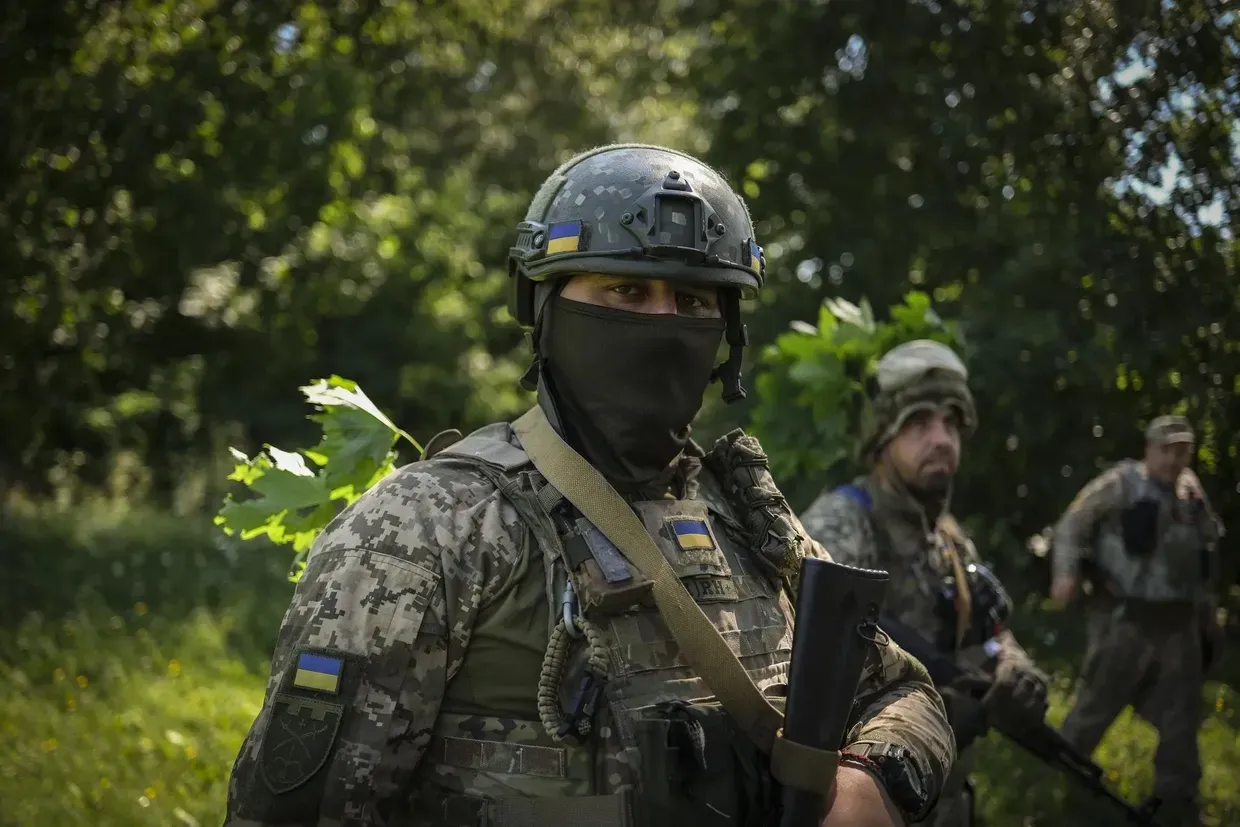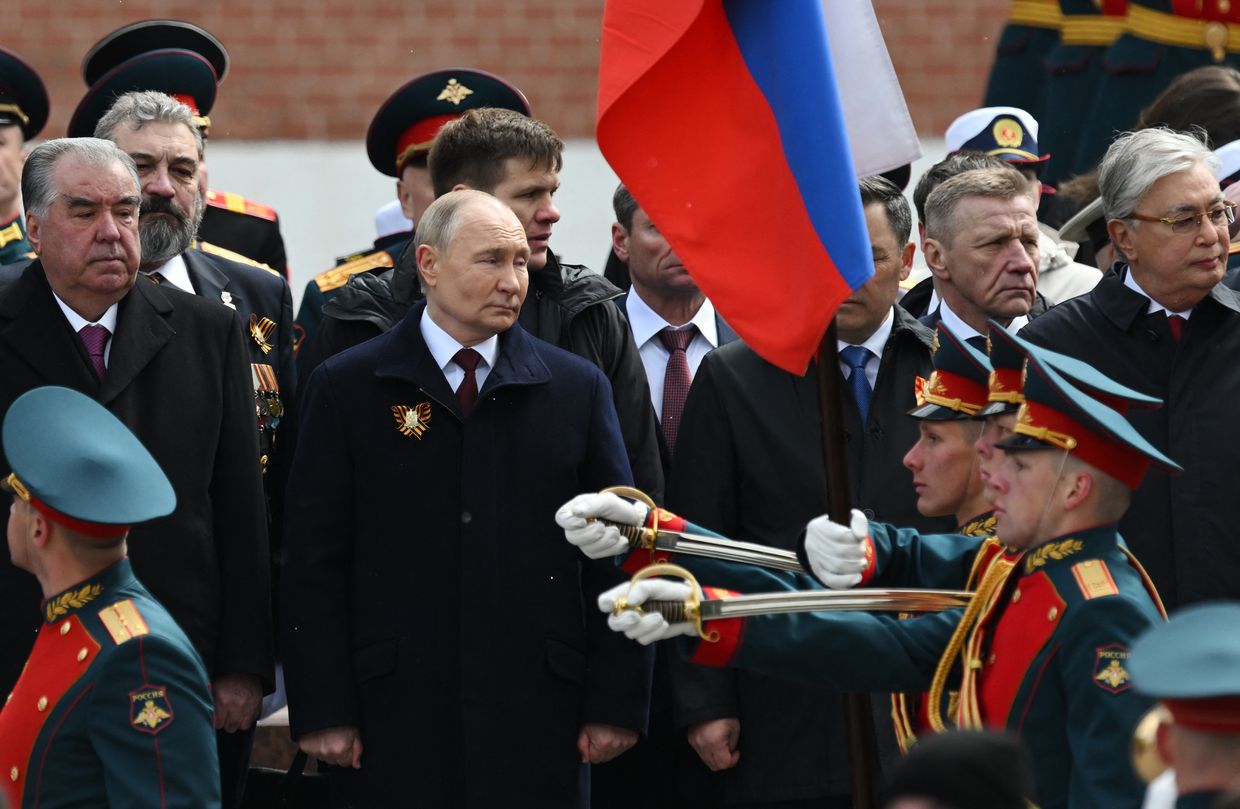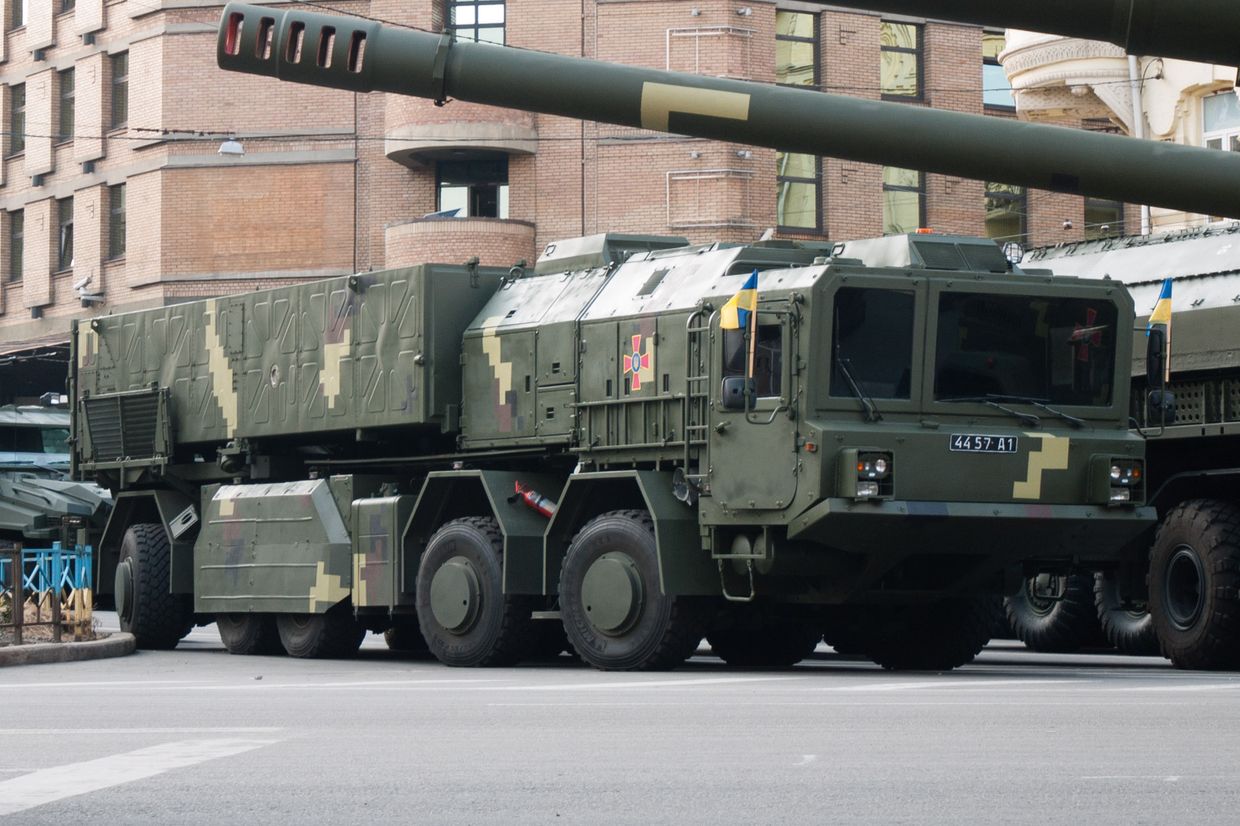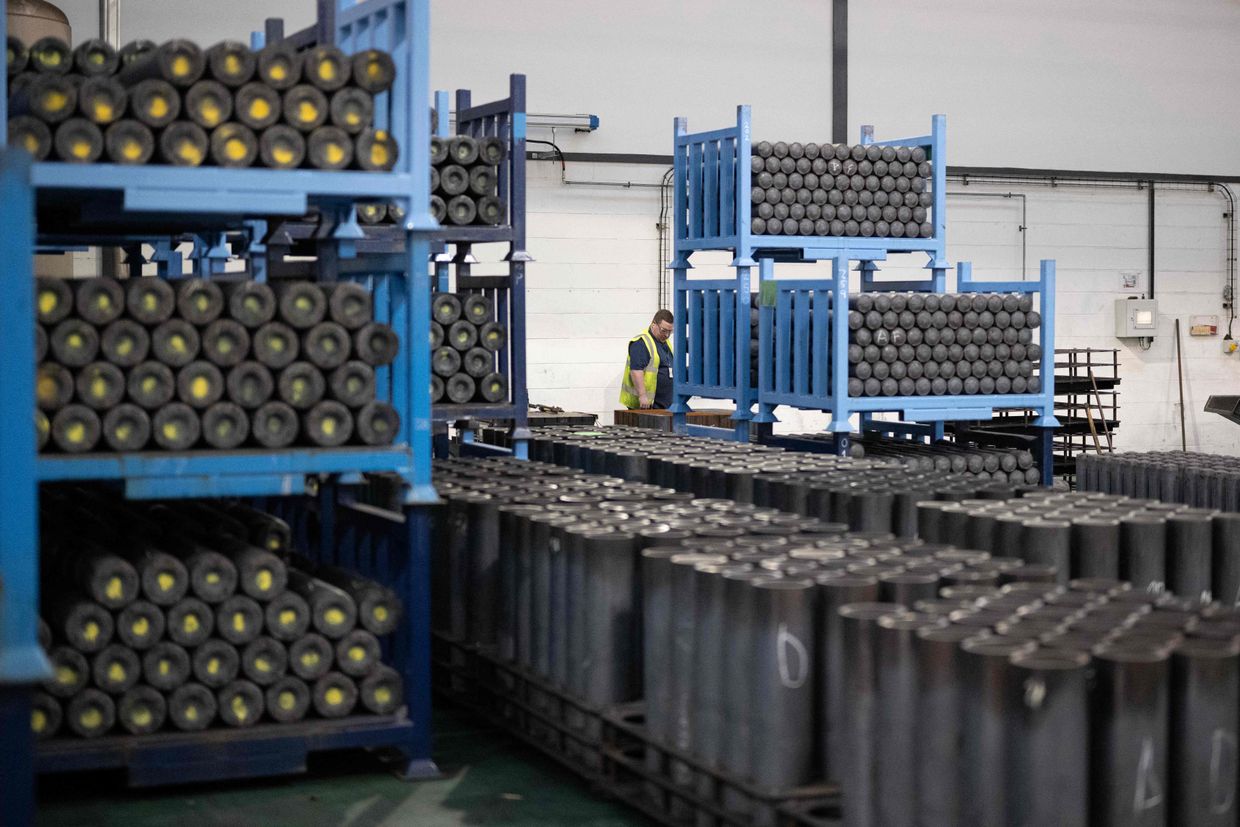Key updates on Jan. 30:
- Cabinet of Ministers submits updated draft law on mobilization to parliament
- Military intelligence: Russia shows no intent to return bodies of POWs allegedly on crashed Il-76
- Official: Russia launches 5 attacks with chemical weapons on southeastern front lines in past day
- Businessman, law enforcement officers in Odesa Oblast accused of helping draft-age men escape to Moldova
- Politico: Ukraine may receive first new long-range bombs from US this week
- Belgium, Ukraine sign memorandum to strengthen joint weapons production
- Minister: Ukraine cannot outproduce Russia, needs to focus on advanced technology
The Cabinet of Ministers submitted an updated draft law on mobilization to Ukraine's parliament, the Verkhovna Rada, Ukraine's Defense Ministry announced on Jan. 30. The updated bill sets out "transparent rules for the mobilization process, as well as necessary regulation of the rights of servicemen and conscripts."
The government originally submitted a bill on mobilization to parliament on Dec. 25, involving provisions on further conscription and restrictions on draft evaders. Lawmakers later returned the bill for a revision on Jan. 11 after weeks of public debate and controversy in Ukraine.
Previous versions of the law proposed, among other things, to restrict the rights of those who evade military registration and service. Such restrictions included a ban on traveling abroad and making transactions with movable and immovable property.
Ukraine's human rights ombudsman, Dmytro Lubinets, said that such restrictions would contradict Ukraine's Constitution. Additionally, some officials pointed out that these provisions could create corruption risks.
The new version of the bill includes specific provisions on rest periods, mandatory military training for recruits, financial compensation, as well legal protections for registered servicemen to travel inside the country.
The bill also specifies clear terms of service for the period of martial law, service exemption for people with all levels of disability, as well as a two-month reprieve for volunteers before the start of service to "resolve personal issues and prepare for mobilization."
Additionally, servicemen will be granted annual leave in installments for up to 15 days during martial law. Servicemen released from captivity will be given an additional 90 days' leave before returning to the front if they are willing.
Regarding military training, newly mobilized recruits will undergo mandatory military training for 2-3 months. The bill also proposes to abolish mandatory conscription for all citizens aged 18-24 and instead introduce five-month military training. However, citizens can choose when to undergo this training.
Finally, financial compensation for Ukrainian servicemen is set at a minimum of Hr 20,000 ($526). Additional remuneration for the period of martial law ranges between Hr 30,000 and 100,000 ($790-2,600).

Military intelligence: Russia shows no intent to return bodies of POWs allegedly on crashed Il-76
Russia shows no willingness to return the bodies of Ukrainian prisoners of war allegedly killed in the Il-76 plane crash on Jan. 24, Ukraine's military intelligence (HUR) spokesperson Andrii Yusov said in a comment to Suspilne, published on Jan. 30.
Russia has alleged that the Russian military aircraft that crashed in Russia's Belgorod Oblast last week was destroyed by Ukrainian forces and that it was carrying 65 Ukrainian prisoners of war.
Ukraine has called Russia's narrative into question and demanded an international investigation, which Moscow has refused.
Yusov reiterated that, as of now, there is no evidence of the presence of the POWs on the crashed plane apart from Russia's claims.
"At the moment, there is no readiness to transfer the bodies from their (Russia's) side. Nevertheless, such efforts continue from our side," Yusov told Suspilne.
"If the worst possibility turns out to be true, we will do everything possible to return our defenders."
Yusov noted that it was possible that the plane was carrying both prisoners and ammunition, with the POWs serving as human shields. On the day of the crash, several Ukrainian media outlets reported, citing military sources, that the aircraft was transporting S-300 missiles.
"Considering that the plane was loaded only to one-third, based on their (Russian) version, other supplies may have been present, as this is the main purpose of the aircraft," the spokesperson said.
Ukraine's Coordination Headquarters for the Treatment of Prisoners of War confirmed that a prisoner swap was planned for Jan. 24 that was meant to involve 65 Ukrainian POWs. Ukrainian officials nevertheless said that Russia has provided no evidence that these prisoners were on the crashed plane.

Official: Russia launches 5 attacks with chemical weapons on southeastern front lines in past day
Russian forces launched five attacks with munitions containing poisonous chemicals against Ukrainian soldiers on the southeastern front lines in the past day, Oleksandr Shtupun, the spokesman for the Tavria group of forces, said on Jan. 30.
Russia has recently increased its use of chemical weapons in Ukraine, with 81 cases documented only in December, according to the Ukrainian military. The 1925 Geneva Protocol prohibits the use of chemical and biological weapons in war.
The munitions used by Russian troops in southeastern Ukraine on Jan. 29 were likely K-51 grenades with chloropicrin, according to Shtupun.
"But each such case is investigated separately. Appropriate analyses are made, and then the results are submitted to international institutions," Shtupun said on national television.
Soldiers can protect from the affect of chloropicrin using gas masks, he added.
Ukraine recorded over 400 cases of Russia's use of munitions containing poisonous chemicals from February 2022 to December 2023, the General Staff of Ukraine's Armed Forces reported on Dec. 27.
Most often, Russia's military reportedly uses grenades, such as K-51, RGR, and Drofa-PM, dropping them from attack drones.

Businessman, law enforcement officers in Odesa Oblast accused of helping draft-age men escape to Moldova
A group of four Odesa Oblast locals, including two law enforcement officers, has helped Ukrainians of draft age evade mobilization by escaping to Moldova, the State Bureau of Investigation reported on Jan. 30.
Under martial law that has been in place since the beginning of the full-scale invasion, it is prohibited for men aged 18-60 to leave Ukraine, barring special circumstances. The BBC reported in November that almost 20,000 Ukrainian men had illegally left the country since February 2022, citing information from neighboring countries.
Ukrainian authorities revealed that more than 21,000 had been apprehended by border guards while trying to cross, the BBC added. The majority of those caught were attempting to walk or swim across the border, but almost 7,000 tried to use falsified documents.
The recently uncovered scheme was organized by a businessman from Odesa Oblast, whose responsibility was finding people willing to illegally cross the border in exchange for $7,000 per person, according to the investigation. He allegedly forged documents to remove the evaders from Ukraine's military register due to fake health issues.
The law enforcement officers organized formal inspections and let men with false certificates across the state border, the bureau said.
The fourth member of the group, who is legally allowed to leave Ukraine as he is a father of over three children, drove the evaders to Moldova in his own car, added the law enforcement agency.
The bureau charged the suspects with illegally transporting people across the state border of Ukraine. If convicted, they will face up to nine years in prison.
Ukrainian authorities routinely discover schemes to help men illegally leave the country to evade mobilization and prosecute suspected organizers.
The State Bureau of Investigation reported on an "unprecedented" plot in November 2023 involving regional military enlistment offices and the falsification of documents. More than 100 men were suspected of using the falsified documents as part of the scheme to try and leave the country.
A nationwide inspection of Ukraine's recruitment offices in August 2023 revealed multiple violations, including corruption, abuse of power, and fraud, prompting President Volodymyr Zelensky to fire the heads of all regional military enlistment offices.

Politico: Ukraine may receive first new long-range bombs from US this week
The U.S. is expected to deliver the first batch of new long-range bombs to Ukraine on Jan. 31, Politico reported, citing a U.S. official and three other people familiar with the matter.
The Ground-Launched Small Diameter Bombs (GLSDB) can reportedly strike at a range of 160 kilometers, expanding Ukraine’s long-range capabilities, alongside Storm Shadow/SCALP and ATACMS missiles.
According to Politico's sources, the Pentagon has successfully tested the new long-range precision bomb for Ukraine that could arrive “on the battlefield” on Jan. 31.
An unnamed U.S. official called GLSDBs "a significant capability for Ukraine," which will allow it “to do more,” Politico reported.
The GLSDB can be launched using the U.S.-made High Mobility Artillery Rocket Systems (HIMARS) which have been in service in Ukraine since June 2022.
The ground-launched version of weapon, co-developed by Boeing and Swedish Saab defense company, is currently not yet in U.S. inventory, Politico said. It has a similar air-launched version.
The delivery of the GLSDB was first announced in February 2023, with initial estimates putting their arrival in Ukraine in late 2023.
Russia claimed that it had shot down a GLSDB in March 2023, but a U.S. official then told Reuters that none of these weapons had been delivered to Ukraine so far.

Belgium, Ukraine sign memorandum to strengthen joint weapons production
Belgium and Ukraine signed a memorandum to develop bilateral relations, including the field of arms production, the Ukrainian Defense Ministry's press service reported on Jan. 29.
The memorandum aims to implement joint projects toward Ukraine's defense industry's growth potential and production volume.
In particular, Ukraine and Belgium will cooperate to produce specific kinds of weapons, repair arms, and prepare specialists, including technical staff.
"It (the memorandum) is vital in regard to the development of the domestic defense-industrial complex, creating joint enterprises, and localization of military production in Ukraine. It is one of our priorities," Ukraine's Deputy Defense Minister Ivan Havryliuk said.
The memorandum also includes measures toward building up a modern defense industry in Ukraine.
"Ukraine is extremely interested in jointly creating enterprises that will operate according to international standards," Havryliuk said.
"I am confident in further productive and mutually beneficial cooperation."
The memorandum was signed after Belgium pledged to deliver 611 million euros ($661 million) in military aid to Ukraine in 2024. It is the most extensive package that Belgium has provided to Ukraine since the beginning of the full-scale war.
Belgium will also send Ukraine several F-16 fighter jets, with the first ones expected to arrive in 2025.
In January, Belgium, as a part of the "fighter jet coalition," announced the delivery of two F-16 fighter jets and 50 training personnel to Denmark to support the training of Ukrainian pilots.
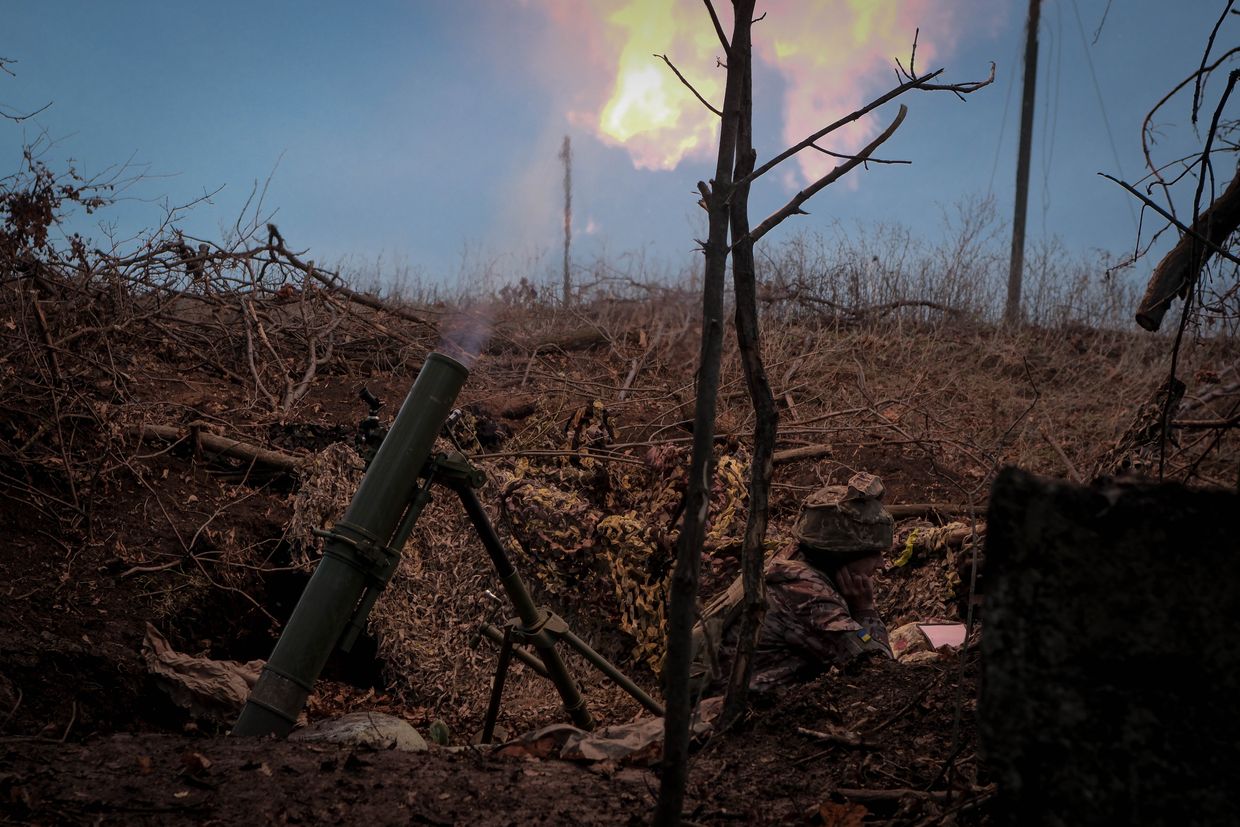
Minister: Ukraine cannot outproduce Russia, needs to focus on advanced technology
Ukraine's industry cannot outperform Russia in terms of conventional weapons production and needs advanced technology to find a new approach, Strategic Industries Minister Oleksandr Kamyshin said in an interview with Time magazine published on Jan. 29.
With over $100 billion in U.S. and EU aid stalled by internal political disputes, Kyiv has been focusing on revitalizing the domestic industry, aiming to build up a homemade arsenal of drones and missiles.
Deputy Defense Minister Ivan Havryliuk previously said that the country plans to increase the production of missiles, arms, and other military equipment several times in 2024.
According to Kamyshin, drones, in particular, are a crucial capability in the ongoing Russia-Ukraine war.
"It sounds boring, but there's a formula: Cost to kill," the minister said in a comment for Time.
As Kamyshin illustrated, while one Stugna anti-tank guided missile that kills, on average, three soldiers costs roughly $4,613, a simple first-person-view (FPV) drone costs only around $1,650.
"You have to pump the maximum amount of money you can into drones."
President Volodymyr Zelensky said in his evening address on Jan. 29 that surpassing Russia in drone production is one of the main tasks for 2024. He also previously revealed that Ukraine aims to produce one million drones this year.
Drone strikes against strategic targets within Russian territory have become increasingly common in the past months.
Although Kyiv does not usually comment on suspected Ukrainian strikes against Russia's rear, Kamyshin previously confirmed that a Ukrainian drone, worth around $350, hit a target in St. Petersburg on Jan. 18. Ukrainian media previously reported that the attack targeted an oil depot.
In the same month, drones reportedly struck oil depots and other targets in Russia's Oryol and Bryansk oblasts.
Another approach Ukraine uses is modifying older Western arms. A team of U.S. and Ukrainian engineers managed to repurpose Sidewinder missiles, first produced in the 1950s and intended as jet fighter armament, into cheap air defense projectiles, Time wrote.
As around $61 billion in support for Kyiv remains gridlocked in U.S. Congress, Ukrainian officials have instead sought to acquire U.S. licenses to maintain already provided weapons or produce them themselves.
Kyiv has also been seeking to attract foreign defense manufacturers to set up shop in Ukraine, promising an affordable workforce and a chance to test weaponry straight on the battlefield.
Strategic Industries Deputy Minister Hanna Hvozdiar and Ukrainian Defense Industry (Ukroboronprom) director Herman Smetanin led a delegation to the U.S. in December 2023, visiting a factory of the arms manufacturer Northrop Grumman.
Speaking at a Ukrainian-British defense industry conference the same month, Defense Minister Rustem Umerov invited U.K. producers to strengthen cooperation with their Ukrainian counterparts, pointing out the advantages of operating in Ukraine.
The leading German arms company, Rheinmetall, has been the first one to agree to start operating in Ukraine, even aiming to build the first armored vehicles on-site in Ukraine in the summer of 2024.

Military: Ukraine hits Russian radar station for air defense in Crimea
Ukrainian forces struck a Russian radar station used in coordination with air defense systems near the village of Rozdolne in northwestern Crimea early on Jan. 30, the Ukrainian military reported.
As the full-scale war has developed, military facilities and infrastructure in Russian-occupied Crimea have become increasingly vulnerable to long-range Ukrainian drone and missile strikes.
Most spectacularly, separate Ukrainian strikes in September 2023, reportedly with British-made Storm Shadow missiles, destroyed a Russian landing ship, submarine, and the headquarters of the Russian Black Sea Fleet in Sevastopol.
The Ukrainian military didn’t specify which weapons were used to hit the radar system on Jan. 30.
Neither Moscow-installed occupation authorities in Crimea nor the Russian Defense Ministry reported on the attack near Rozdolne.
Yurii Ihnat, a spokesperson for Ukraine's Air Force, said on Jan. 20 that Russia’s air defense was thinning out, with a sufficient capacity on Ukraine's front lines and in occupied Crimea but not on Russian soil.
According to the U.K. Defense Ministry’s Nov. 2 intelligence update, Ukrainian strikes destroyed at least four Russian surface-to-air missile (SAM) launchers located in occupied territories in one week.
Russia's high-tech, expensive SAM systems have reportedly suffered significant losses due to Ukraine's introduction of modern precision strike weapons onto the battlefield.
In order to compensate for the losses in Ukraine, Russia was probably forced to cycle out air defense systems from other locations, such as within Russia, which could have weakened its defenses there, the ministry wrote.



